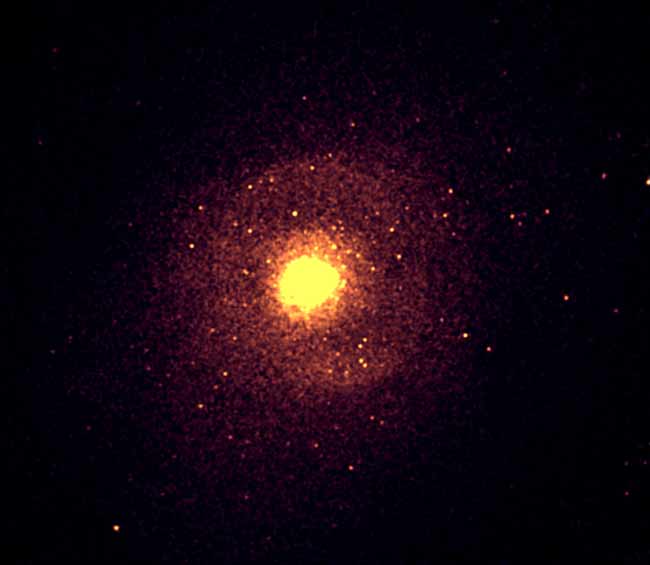Black Hole Belts Out Discordant Musical

A gigantic sonic boom and a periodic deep cacophony of sound emanated from a supermassive black hole, according to observations by NASA's Chandra X-ray Observatory.
The black hole, one of the biggest in the universe, lies at the center of M87, a nearby elliptical galaxy within the Virgo cluster of galaxies.
Scientists detected loops and rings in the hot, X-ray emitting gas that surrounds the galaxy and permeates the cluster. These features provide evidence for periodic eruptions that occurred near the supermassive black hole and generated pressure waves in the gas that manifest themselves as sound.
"We can tell that many deep and different sounds have been rumbling through this cluster for most of the lifetime of the universe," William Forman of the Harvard-Smithsonian Center for Astrophysics said yesterday.
These noisy outbursts occur when material falls toward the black hole. While the black hole devours most of the material, some of it is violently ejected in jets from regions close to the black hole that push into the cluster's gas.
These outbursts occur every few million years and prevent the gas from cooling and forming new stars, which is why M87 has retained its elliptical shape.
"If this black hole wasn't making all of this noise, M87 could have been a completely different type of galaxy, possibly a huge spiral galaxy about 30 times brighter than the Milky Way," said team member Paul Nulsen.
Get the Space.com Newsletter
Breaking space news, the latest updates on rocket launches, skywatching events and more!
The Chandra observations also found a nearly circular ring [image] of high-energy X-rays about 85,000 light-years in diameter centered on the black hole. It is the strongest evidence to date of a shock wave produced by a powerful explosion, the astronomers said.
Sound from a black hole has been detected before: A black hole in the Perseus cluster was calculated to have a note about 57 octaves below middle C. The sound from M87's black hole is more discordant and deeper, with some sound waves implying a note around 56 octaves below middle C. Large outbursts, like the sonic boom, are evidence of deeper notes, closer to 58 or 59 octaves below middle C.
- Sounds in Space: Silencing Misconceptions
- NASA Completes Survey of Nearby Supermassive Black Holes
- Black Holes Power the Brightest Cosmic Objects, Study Confirms
- The Strangest Things in Space
- All About Black Holes
Join our Space Forums to keep talking space on the latest missions, night sky and more! And if you have a news tip, correction or comment, let us know at: community@space.com.

Space.com is the premier source of space exploration, innovation and astronomy news, chronicling (and celebrating) humanity's ongoing expansion across the final frontier. Originally founded in 1999, Space.com is, and always has been, the passion of writers and editors who are space fans and also trained journalists. Our current news team consists of Editor-in-Chief Tariq Malik; Editor Hanneke Weitering, Senior Space Writer Mike Wall; Senior Writer Meghan Bartels; Senior Writer Chelsea Gohd, Senior Writer Tereza Pultarova and Staff Writer Alexander Cox, focusing on e-commerce. Senior Producer Steve Spaleta oversees our space videos, with Diana Whitcroft as our Social Media Editor.









